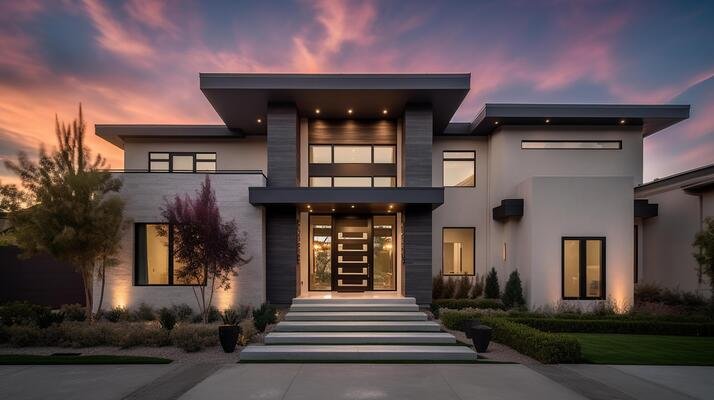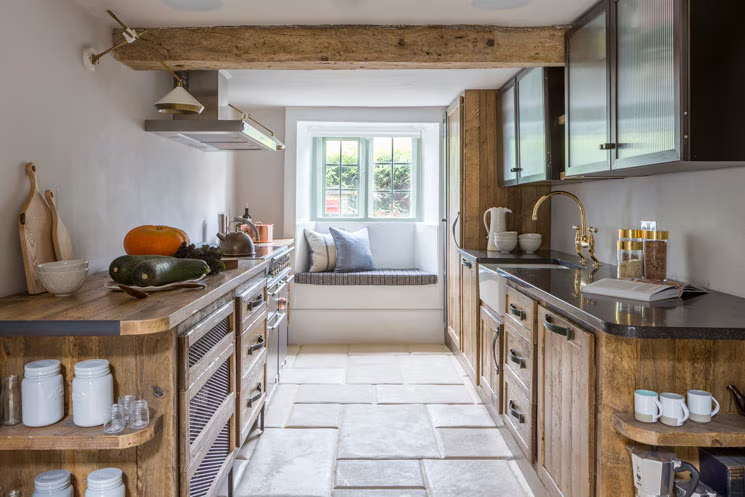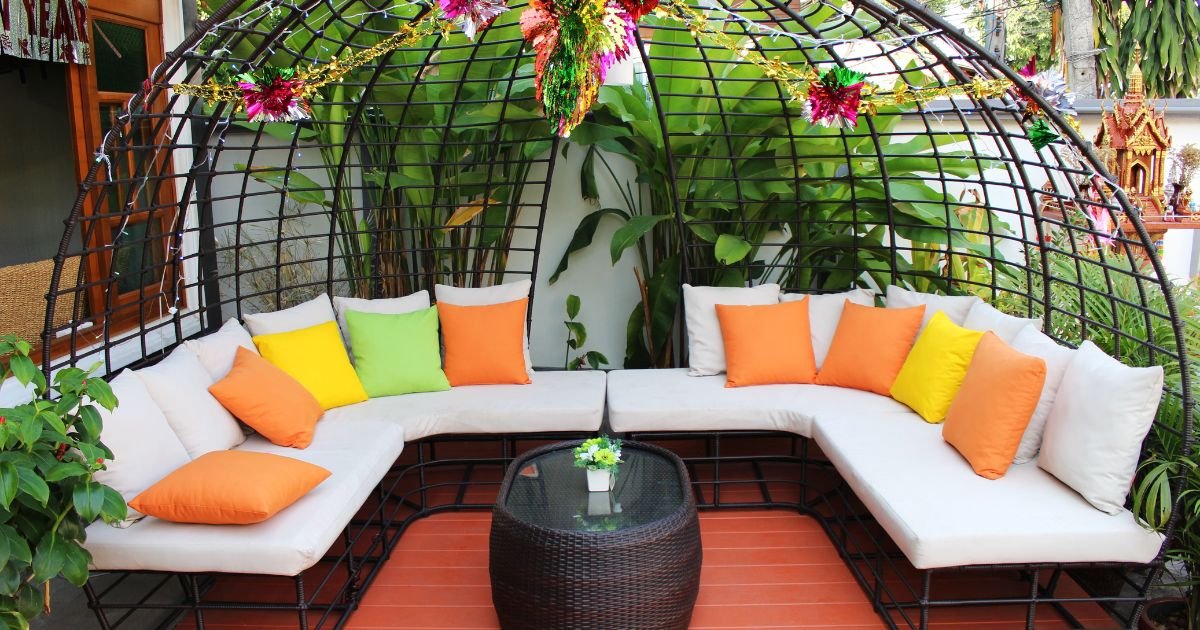Interior design is, at its core, the art of space. It involves shaping and organizing spaces to create harmonious and visually pleasing compositions.
Interior design is a multifaceted art and science that transforming spaces into aesthetically pleasing and functional environments.
It involves combining various elements to create harmonious and visually appealing settings.
The language used to describe interior design is rich and diverse, encompassing a wide array of terms and phrases that help convey the nuances and intricacies of this creative discipline.

1. Aesthetic Elements
a. Color Palette
The color palette is a fundamental aspect of interior design. Words to describe it include vibrant, muted, complementary, analogous, monochromatic, or contrasting. Each color elicits different emotions and impacts the overall ambiance of a space.
b. Texture
Texture describes the feel or appearance of a surface, often categorized as rough, smooth, soft, or stern. Words like tactile, woven, rough-hewn, glossy, or matte can convey specific textural elements in interior design.
c. Pattern
Patterns are repetitive designs or motifs that add visual interest to a space. Geometric, floral, abstract, or intricate terms can describe various patterns incorporated into interior design.
2. Spatial Arrangement
a. Layout
The layout defines how furniture and other elements are arranged within a space. Words like open, symmetrical, asymmetrical, or compact can describe different layouts in interior design.
b. Flow
Flow refers to how one moves through a space. Words such as seamless, fluid, or obstructed can describe the movement within an interior and how elements guide a person from one area to another.
c. Balance
Balance in interior design pertains to the distribution of visual weight within a space. Symmetrical, asymmetrical, radial, or formal can describe different balance techniques designers employ.

3. Furniture and Furnishings
a. Furniture Style
Different styles of furniture have distinct characteristics and designs. Words like modern, traditional, vintage, contemporary, or minimalist can describe the style of furniture used in interior design.
b. Material
Materials used in furniture and furnishings play a significant role in the overall design. Words such as wood, metal, fabric, leather, glass, or eco-friendly can describe the materials utilized in interior design.
c. Ergonomics
Ergonomics involves designing furniture for maximum comfort and efficiency. Words like ergonomic, adjustable, comfortable, or functional describe furniture prioritizing human experience and well-being.

4. Lighting and Ambiance
a. Lighting Types
Lighting can drastically affect the ambiance of a space. Words like ambient, task, accent, natural, or artificial can describe the different types of lighting and their effects on interior design.
b. Mood
The mood of a space is created through lighting, colors, and textures. Words like cozy, vibrant, serene, intimate, or lively can describe the mood that a particular interior design evokes.
5. Decorative Elements
a. Art and Decor
Art and decorative pieces add character and personality to a space. Words like contemporary, abstract, traditional, eclectic, or minimalist can describe the various artistic styles and decorative elements incorporated in interior design.
b. Plants and Greenery
Bringing nature indoors is a common practice in interior design. Words like lush, verdant, natural, or botanical can describe incorporating plants and greenery in interior spaces.
6. Sustainability in Interior Design
With the growing awareness of environmental issues, sustainable practices have become an essential aspect of interior design.
It involves eco-friendly materials and entails energy-efficient systems, waste reduction, and an overall design approach that minimizes negative environmental impacts.
Words like sustainable, eco-friendly, zero-waste, renewable, or energy-efficient can describe the various sustainability measures incorporated in interior design.

7. The Role of Technology in Interior Design
In the digital age, technology has significantly impacted the field of interior design, offering innovative tools and platforms for creating and visualizing designs.
Virtual reality (VR) and augmented reality (AR) technologies enable designers and clients to experience spaces before they are physically realized, thus aiding in making informed design choices.
Software applications facilitate precise planning and manipulation of design elements, reducing errors and enhancing efficiency.
In the realm of smart homes, interior design intertwines with technology to create environments that are aesthetically pleasing, intelligent, and responsive to the occupants’ needs.
Words like digital, virtual, intelligent, interactive, or automated can be used to describe the incorporation of technology in interior design.
8. The Importance of Client-Designer Collaboration in Interior Design
Interior design is a collaborative process that involves a mutual exchange of ideas and preferences between the client and the designer.
Understanding the client’s vision, lifestyle, and personal tastes is crucial in creating a design that reflects their identity and meets their needs.
On the other hand, the designer brings their expertise, creativity, and understanding of design principles to the table, guiding the client towards aesthetically pleasing, functional, and sustainable solutions.
The keywords that signify client-designer collaboration in interior design are consultation, collaboration, personalization, customization, or mutual understanding.
9. The Influence of Culture and Heritage in Interior Design
Interior design reflects the culture and heritage of a place or an individual. Different cultures worldwide have distinct architectural and decorative styles that have evolved over centuries.
These cultural elements can be incorporated into interior design to create beautiful spaces, tell a story, and evoke a sense of history.
Words like traditional, cultural, heritage, indigenous, or ethnic can describe incorporating cultural elements in interior design.
10. The Impact of Interior Design on Well-being
Interior design significantly impacts the well-being and mental health of individuals.
A well-designed space can help reduce stress, improve mood, and foster a sense of peace and tranquility.
It can also aid in productivity and creativity by creating a conducive environment for work and recreation. In healthcare and therapeutic settings, interior design can facilitate healing and recovery.
Words like wellness, therapeutic, holistic, rejuvenating, or calming can be used to describe the impact of interior design on well-being.
Conclusion
Exploring the Word of Interior Design? The language of interior design is a rich tapestry of words and phrases that convey the intricate aspects of creating aesthetically pleasing and functional spaces. Understanding and utilizing this language helps designers and enthusiasts communicate and appreciate this art form’s nuances. From color palettes to spatial arrangements, furniture styles to decorative elements, and lighting to ambiance, the language of interior design provides a comprehensive vocabulary to describe and appreciate the creativity and skill involved in crafting captivating interiors.
FAQs
How do you describe interior design?
Interior design is a multifaceted discipline involving indoor spaces’ creative and strategic planning to enhance functionality and aesthetic appeal.
It encompasses selecting and arranging color schemes, furniture, lighting, and decorative elements, guided by design principles and personal tastes.
The ultimate goal is to create spaces that are not only visually pleasing but also comfortable, practical, and reflective of the inhabitants’ personalities and lifestyles.
What are the keywords for interior design?
Keywords for interior design typically include terms related to design elements, such as color, texture, and layout; design styles, like modern, rustic, or minimalist; and overarching concepts, such as sustainability, functionality, and aesthetics. Other essential keywords include personalization, creativity, innovation, and collaboration, reflecting the dynamic and client-centered nature of the field.
What words describe design?
Various terms can describe design, such as innovative, creative, functional, aesthetic, and strategic. It also encompasses conceptual aspects, like problem-solving, user-centric, and transformative.
Furthermore, it involves practical elements like layout, form, color, and texture. Ultimately, design is a blend of artistry and engineering, aiming to create visually appealing, practical solutions and enhance the user’s experience.
How do you compliment beautiful interior design?
Complimenting beautiful interior design can be as simple as recognizing the outstanding elements. You might say, “The color scheme is stunning and creates a warm, inviting atmosphere.
The furniture selections are tastefully done, and there’s a harmonious balance between the modern and traditional elements. The attention to detail is impressive, and overall, the space has a very cohesive and aesthetically pleasing design.”




